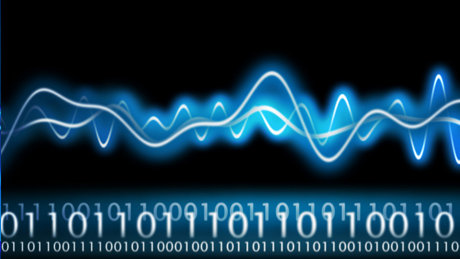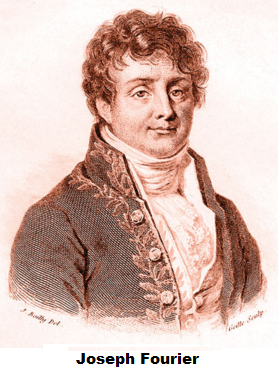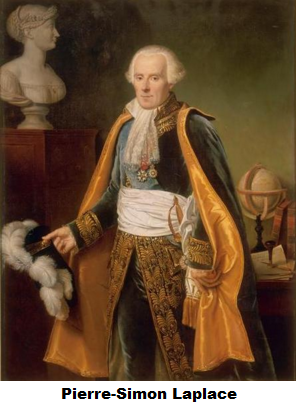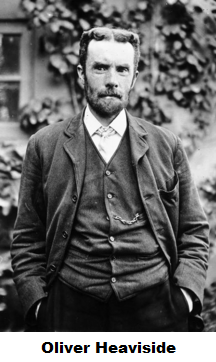
We have already solve simple DC resistive circuit problems and sinusoidal AC circuit problems ( in Circuit Analysis Pt.1 && Circuit Analysis Pt.2 ), now we need some ultimate mathematical tricks to solve all the circuit problems with periodic voltage sources and aperiodic voltage sources.
1. Fourier Series

A Fourier series is a way to represent a wave-like function as the sum of simple sine waves. More formally, it decomposes any periodic function or periodic signal into the sum of a (possibly infinite) set of simple oscillating functions, namely sines and cosines (or, equivalently, complex exponentials). The Fourier series is named in honor of Jean-Baptiste Joseph Fourier (1768–1830), who made important contributions to the study of trigonometric series, after preliminary investigations by Leonhard Euler, Jean le Rond d’Alembert, and Daniel Bernoulli.
Definition:
$f(x)$ is a continuous periodic function. $2l$ is its period length.
$$\begin{aligned}
f(x)=\frac{a_0}{2}+\sum_{n=1}^{\infty}(a_{n} cos \frac{n \pi x}{l}+b_{n} sin \frac{n \pi x}{l})
\end{aligned}$$
Where:
$$\left\{
\begin{aligned}
a_{n}=\frac{1}{l}\int_{-l}^{l}f(x)cos \frac{n \pi x}{l} dx\\
b_{n}=\frac{1}{l}\int_{-l}^{l}f(x)sin \frac{n \pi x}{l} dx\\
\end{aligned}
\right.$$
Now we can use phasor method and superposition theorem to solve these circuit problems.
2. Laplace Transform - The Theorem

Integral transform: In mathematics, an integral transform is any transform $T$ of the following form:
$$\begin{aligned}
(Tf)(u)=\int_{t_1}^{t_2}K(t,u)f(t)dt
\end{aligned}$$
The input of this transform is a function $f$ of the independent variable $t$, and the output is another function $Tf$ of the independent variable $u$. An integral transform is a particular kind of mathematical operator.
Of course we also need an inverse transform to get the function back:
$$\begin{aligned}
f(t)=\int_{u_1}^{u_2}K^{-1}(u,t)(Tf)(u)du
\end{aligned}$$
Actually, this started with J.Fourier. (why always him?)
If you make $l\to +\infty$, the Fourier series becomes a integral form equation.
$$\begin{aligned}
f(t)=\frac{1}{\pi}\int_{0}^{+\infty}d\omega \int_{-\infty}^{\infty}f(u)cos\omega(u-t)du
\end{aligned}$$
And according to Euler’s equation, we get Fourier transform:
$$\begin{aligned}
F(\omega)=\int_{-\infty}^{+\infty}f(t)e^{-j\omega t}dt\\
f(t)=\frac{1}{2\pi}\int_{-\infty}^{+\infty}F(\omega)e^{j\omega t}d\omega
\end{aligned}$$
However, this transform is not so good to be used:
- As for $f(t)$, we don’t care what happen when $t<0_{-}$.
- As for $\omega$, it is actually the imaginary part of $j\omega$, so what we get from Fourier transform is actually a function of a pure imaginary variable but not a function of a complex variable, which is what we need in circuit analysis.
In 1785, P.Laplace got his transform: Laplace transform. It takes a function of a positive real variable t (often time) to a function of a complex variable s (often frequency). Actually this function is some kind of “improved edition” of Fourier transform. It specifically solved the 2 problems above.
Definition:
$$\begin{aligned}
F(s)=\int_{0}^{+\infty}f(t)e^{-st}dt\\
f(t)=\frac{1}{2 \pi j}\int_{\sigma-j\infty}^{\sigma+j\infty}F(s)e^{st}ds
\end{aligned}$$
Where:
$$\begin{aligned}
s=\sigma+j\omega
\end{aligned}$$
Well, this time it is good enough… but how can we use it in solving circuit problems?
Actually, not until more than 100 years later has someone thought of using this Laplace’s method in solving circuit problems. While when someone started using this way to do circuits, he couldn’t proof that it was correct because he simply found this method out of his intuition without knowing that Laplace had proved it for him more than 100 years ago. How pathetic they were!
3. Laplace Transform - Heaviside’s Contributions

Oliver Heaviside (1850-1925) was a self-taught genius in electrical engineering who made many important contributions in the field. However, he was best known to engineers for his operational calculus, a tool for solving linear differential equations with constant coefficients, which he discovered around the turn of the century and which was popularized by Steinmetz in the United States.
For example, he defined such operators:
$$\begin{aligned}
p=\frac{d(*)}{dt}\\
\frac{1}{p}=\int_{-\infty}^{t}(*)dt
\end{aligned}$$
In this way, a differential equation like this: $r’’+6r’+5r=e’+3e$ can be written as:
$$\begin{aligned}
(p+1)(p+5)r=(p+3)e
\end{aligned}$$
So integral operations and differential operations become multiplications and divisions. It is much easier.
The operational calculus was severely limited by its lack of mathematical theory, which not only limited its field of application, but also created many uncertainties and ambiguities. Actually Laplace transform was the mathematical theory Heaviside needed, but it was a mathematical obscurity in his time. Sorry for Mr.Heaviside. :(
4. Laplace Transform - Applications
From time domain to frequency domain:
a). Ohm’s Law:
$$\begin{aligned} U=I\times R \Rightarrow U(s)=I(s)R \end{aligned}$$b). VCRs of R, L and C:
- Resistors:$$\begin{aligned} \mathcal{L}\{resistor\}=R=r \end{aligned}$$
- Inductors:$$\begin{aligned} &\because u(t)=L\frac{di}{dt}\\ &\therefore U(s)=sLI(s)-Li(0_{-})\\ &\therefore \mathcal{L}\{inductor\}=sL \end{aligned}$$
- Capacitors:$$\begin{aligned} &\because i(t)=C\frac{du}{dt}\\ &\therefore u(t)=\frac{1}{C}\int_{t_0}^{+\infty}i(t)dt\\ &\therefore U(s)=\frac{1}{sC}I(s)+\frac{u(0_{-})}{s}\\ &\therefore \mathcal{L}\{capacitor\}=\frac{1}{sC} \end{aligned}$$
- It’s worth noting that the transformed form of capacitors and inductors is not only related to C and L but also in relation to the initial values of voltages or currents.
c). Laplace transform of some important kinds of drive signals:
- Impulse function (Dirac delta function):$$\begin{aligned} & f(t)=\delta(t) \Rightarrow F(s)=1\\ & f(t)=\delta^{n}(t) \Rightarrow F(s)=s^n \end{aligned}$$
- Unit step function (Heaviside step function):$$\begin{aligned} & f(t)=\varepsilon(t) \Rightarrow F(s)=\frac{1}{s} \end{aligned}$$
- Some polynomial functions:$$\begin{aligned} & f(t)=t \Rightarrow F(s)=\frac{1}{s^2}\\ & f(t)=t^n , n\in \mathbb{N}_{+} \Rightarrow F(s)=\frac{n!}{s^{n+1}}\\ \end{aligned}$$
- Exponential functions and trigonometric functions:$$\begin{aligned} & f(t)=e^{-at} \Rightarrow F(s)=\frac{1}{s+a}\\ & f(t)=t^{n}e^{-at} , n\in \mathbb{N}_{+} \Rightarrow F(s)=\frac{n!}{(s+a)^{n+1}}\\ & f(t)=sin\omega t \Rightarrow F(s)=\frac{\omega}{s^2+\omega^2}\\ & f(t)=cos\omega t \Rightarrow F(s)=\frac{s}{s^2+\omega^2}\\ & f(t)=e^{-at}sin(\omega t+\phi) \Rightarrow F(s)=\frac{(s+a)sin\phi+\omega cos\phi}{(s+a)^2+\omega^2}\\ & f(t)=e^{-at}cos(\omega t+\phi) \Rightarrow F(s)=\frac{(s+a)cos\phi-\omega sin\phi}{(s+a)^2+\omega^2} \end{aligned}$$
- If you need more, check this out: Rapidtables: Laplace Transform.
d). Heaviside Cover-up Method
The inverse transform of Laplace transform seems to be too complicated, so O. Heaviside taught us his “empirical” method, actually also some tricks to deal with differential equations just like his “operational calculus”: Heaviside cover-up method.
FINALLY…
That’s all:
- DC resistive circuits: Ohm’s law, Kirchhoff’s circuit laws, Thévenin’s theorem.
- Periodic AC circuits: Phasor method, Fourier series, superposition theorem.
- ANY circuit: Laplace transform.
…
I need a nap…
References:
- Li,Hansun. Basis of Circuit Analysis, 4th ed. [M]. Beijing: Higher Education Press, 2007.
- Lin,Chunying. Electric Circuits and Magnetic Circuits, 2nd ed. [M]. Beijing: China Electric Power Press, 2014.
- Department of Mathematics, Tongji University, Advanced Mathematics, 6th ed. [M]. Beijing: Higher Education Press, 2007.
- Song,Suluo. Complex Function and Integral Transform. [M]. Beijing: Science Press, 2013.
- Calvert,James. Heaviside, Laplace and the Inversion Integral [EB/OL]. http://mysite.du.edu/~jcalvert/math/laplace.htm, 2016-01-30.
- Miller,James. Methods of Finding Laplace Transforms and Inverse Transforms, etc. [EB/OL]. http://www.solitaryroad.com/c913.html, 2016-01-31.
- Wikipedia [EB/OL]. https://en.wikipedia.org, 2016-01-31.
- Wikibooks [EB/OL]. https://en.wikibooks.org/wiki/Main_Page, 2016-01-31.
- Rapidtables [EB/OL]. http://rapidtables.com/, 2016-01-31.